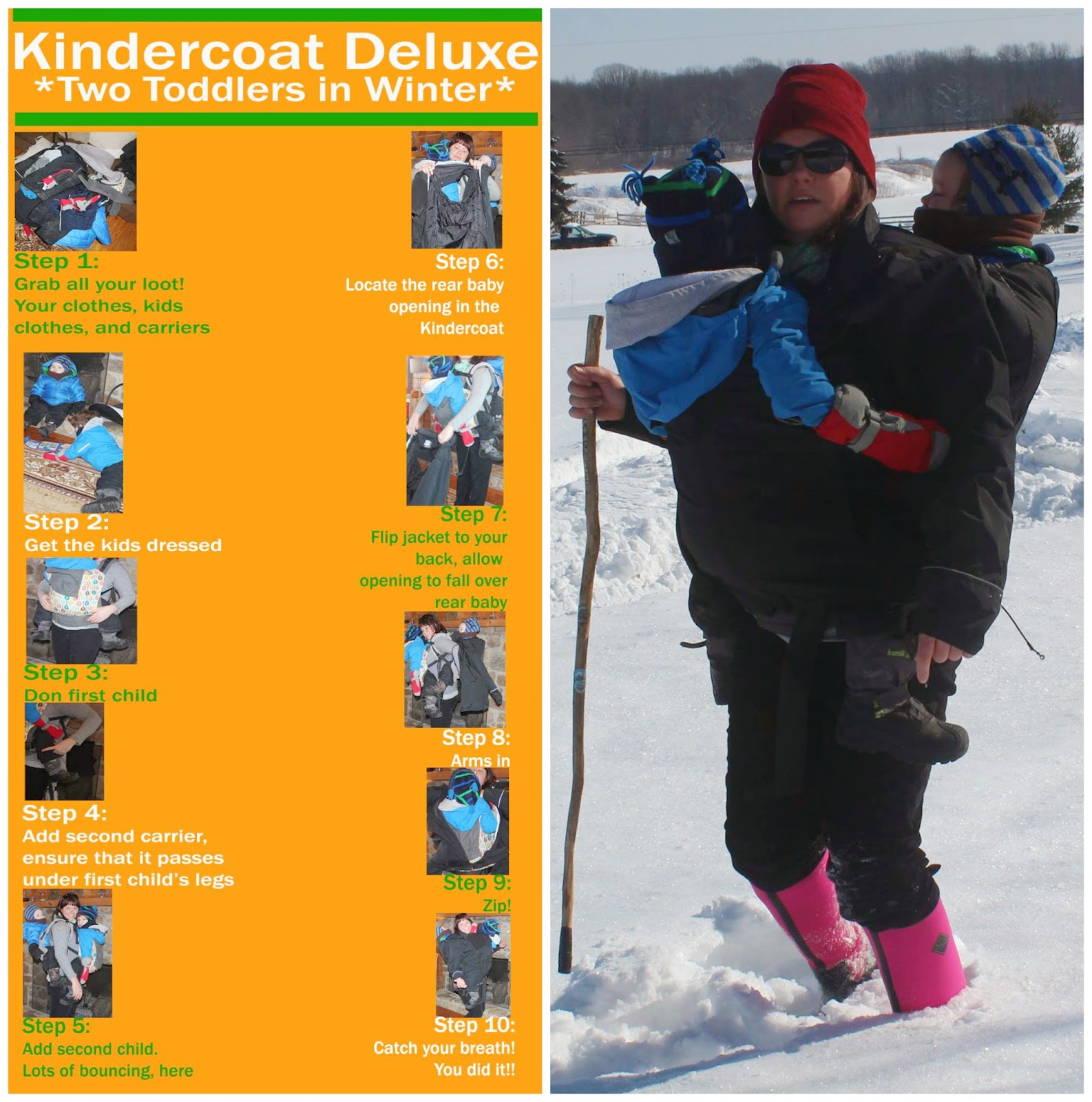
Jess lives on a farm so staying inside in the winter hibernating isn't really an option. One of these coats was an essential part of her wardrobe! Let's follow along and learn how to pull it off as effortlessly as she does.
"In cold weather wearing, I always leave one element exposed as a reminder that the kids likely have something I didn't cover too well. I may have missed an ankle, or an ear isn't covered well, etc. On my end, I'll leave off gloves, not wear long johns, or leave off a hat ... all as a reminder of the true temperature.
Also, usually bigger babe is on back, but mine pitch a fit that way, so we go backwards."
Thank you Jess for making the great infographic and tips! It is totally helpful. With temperatures this cold, we can use all the help and advice we can get.










